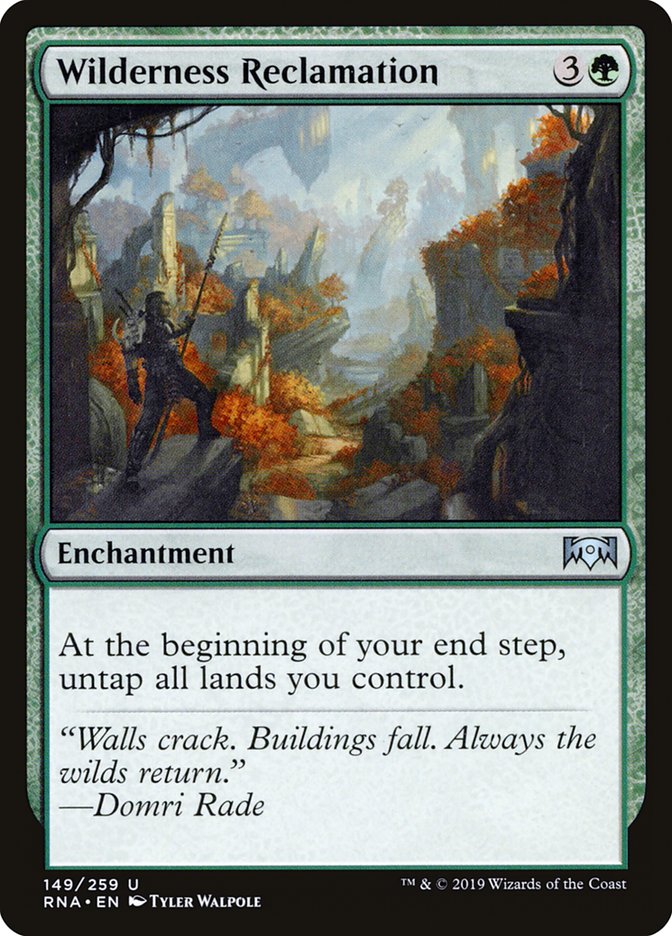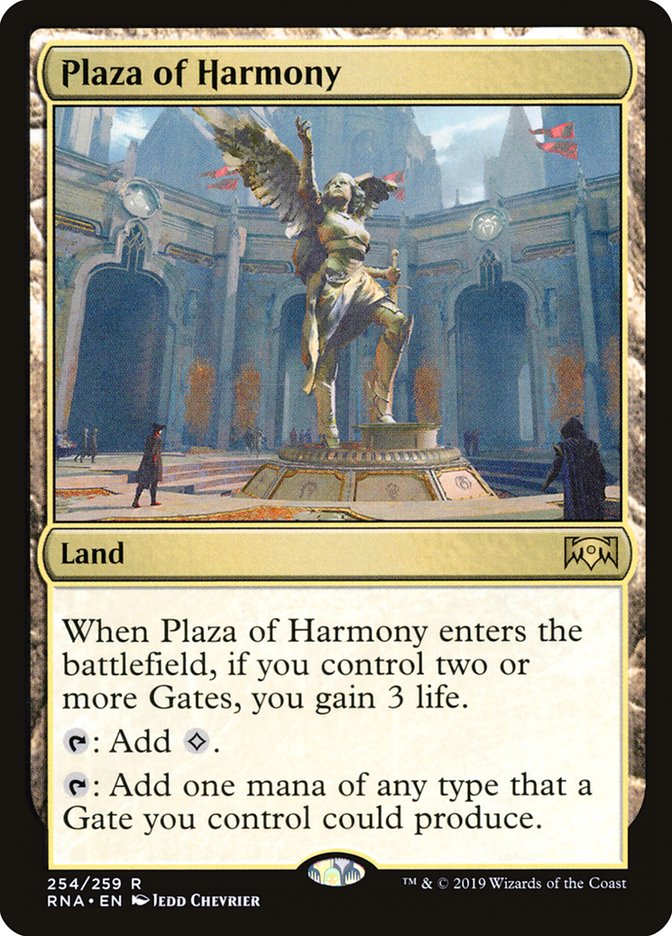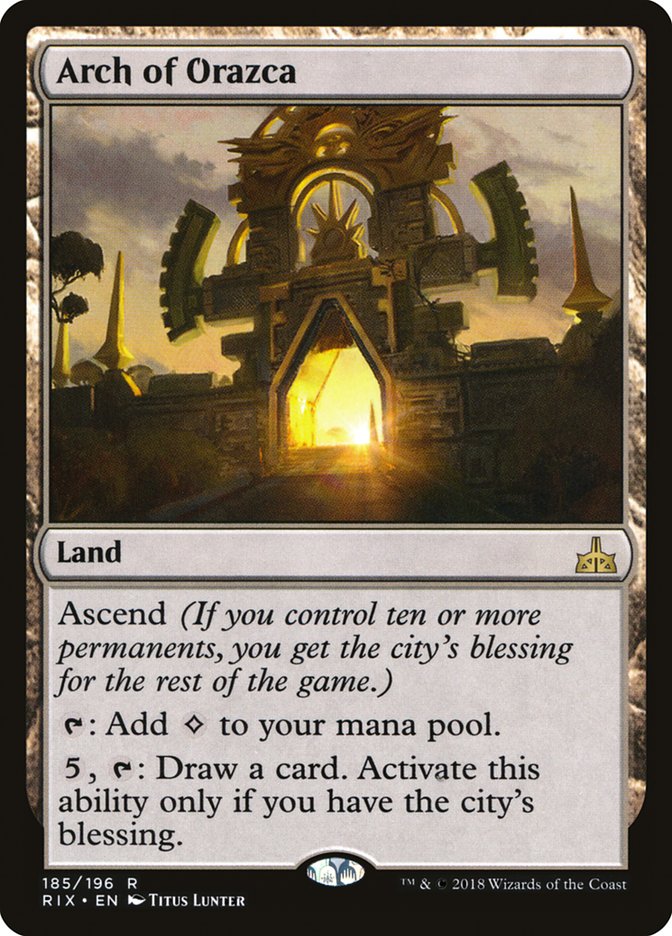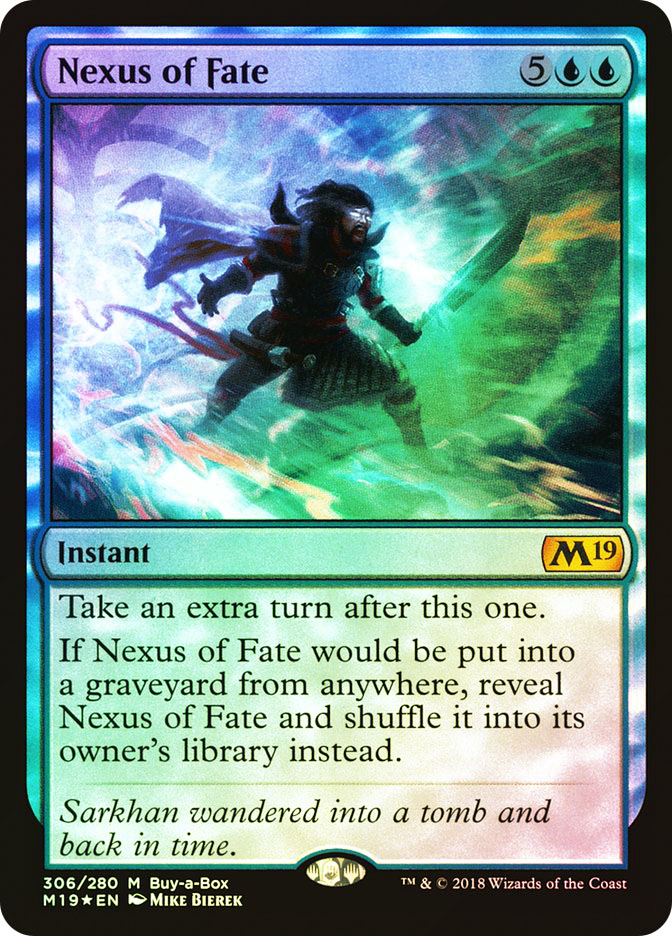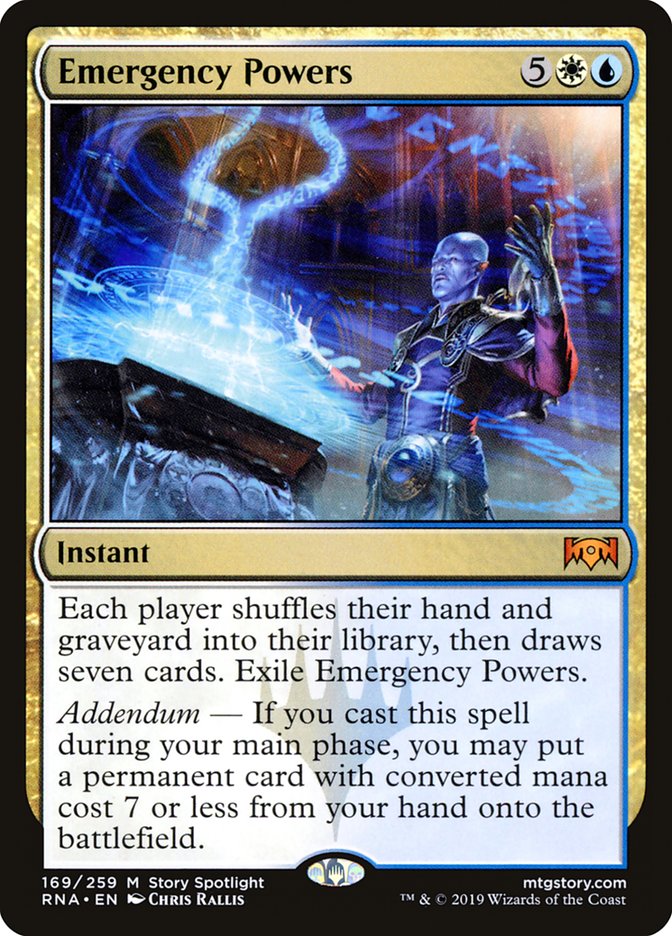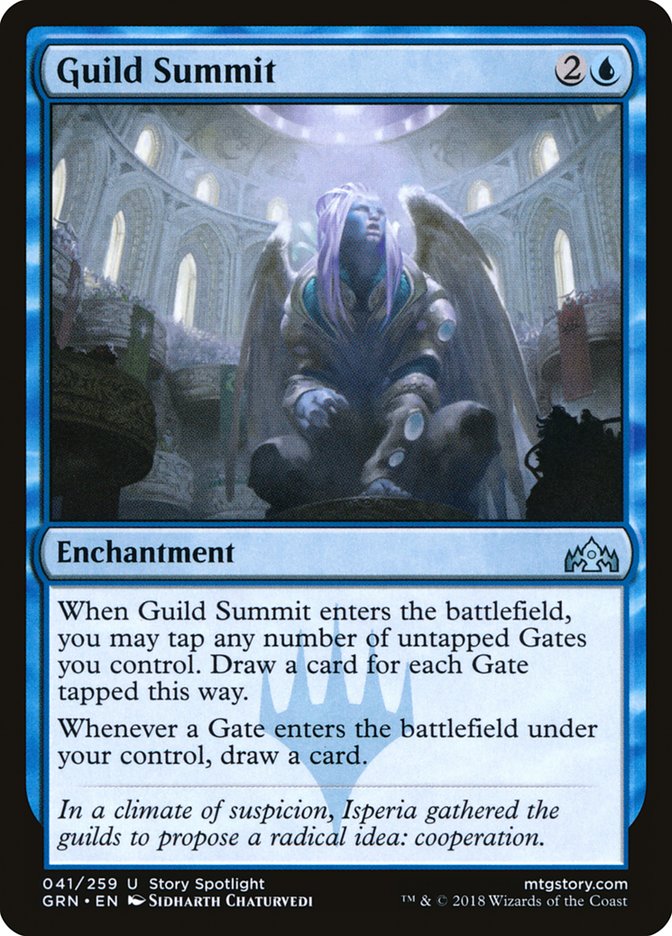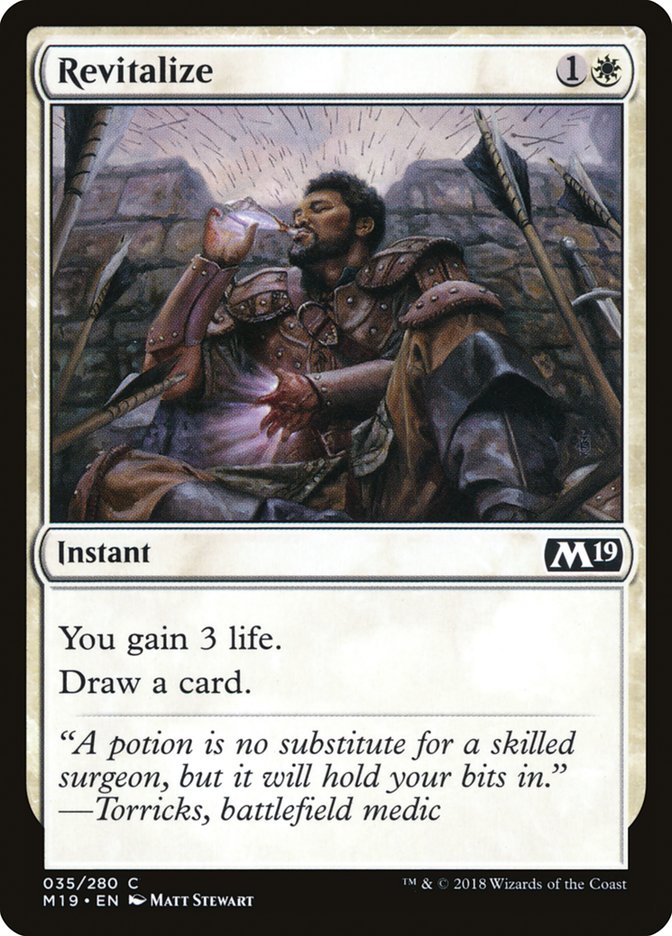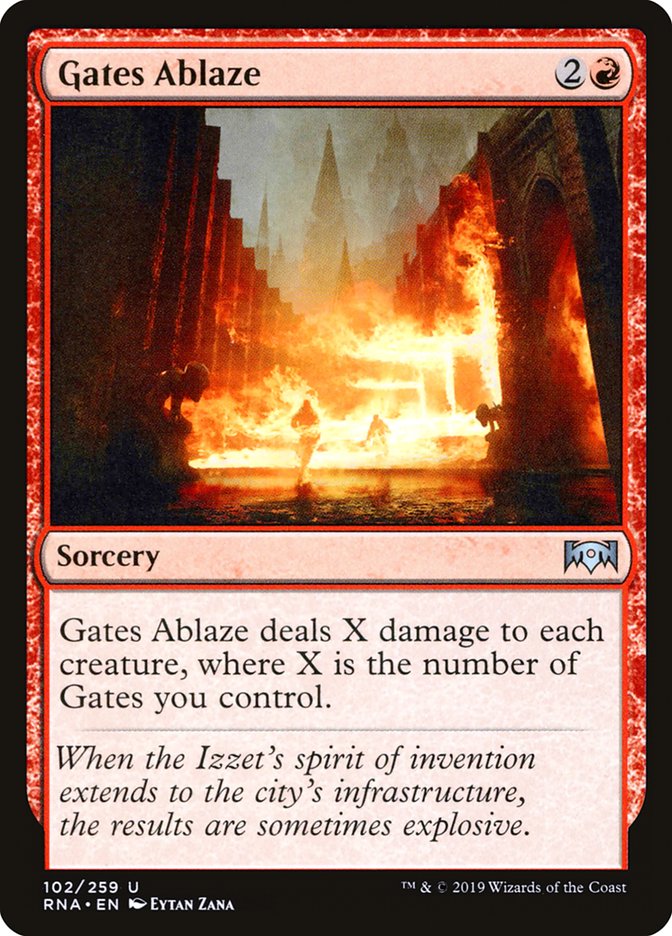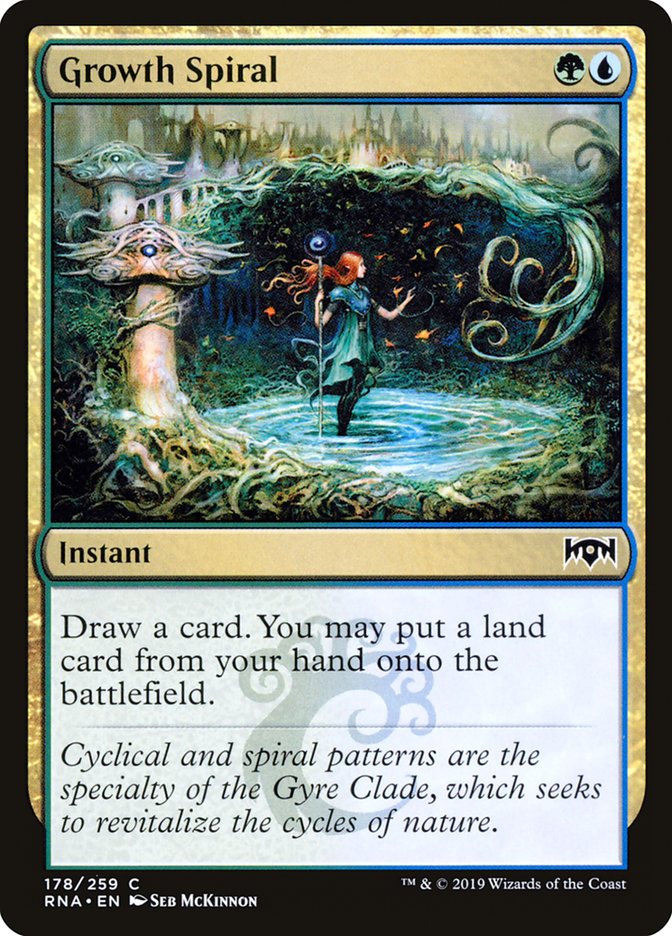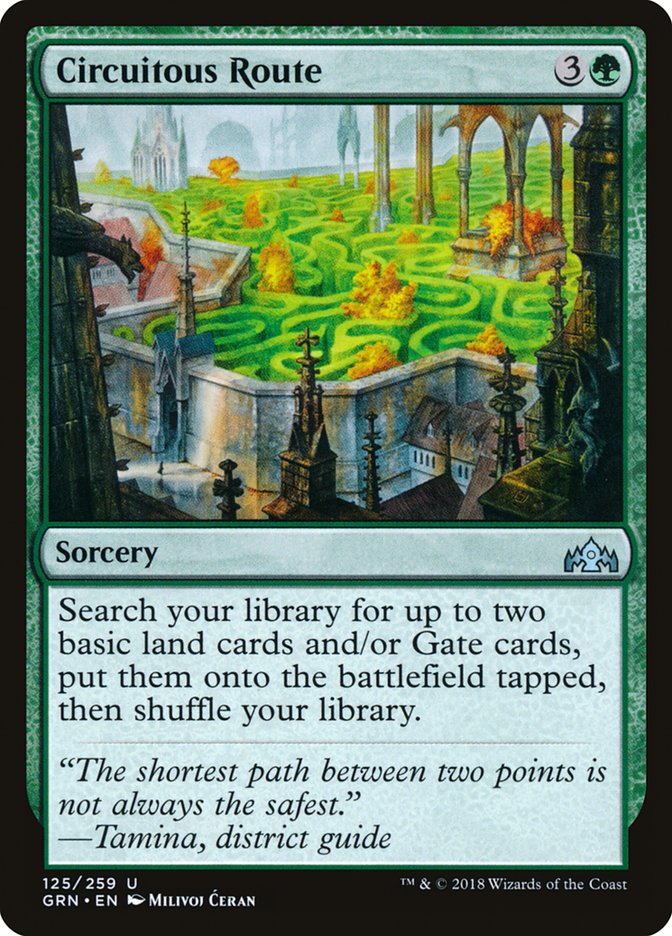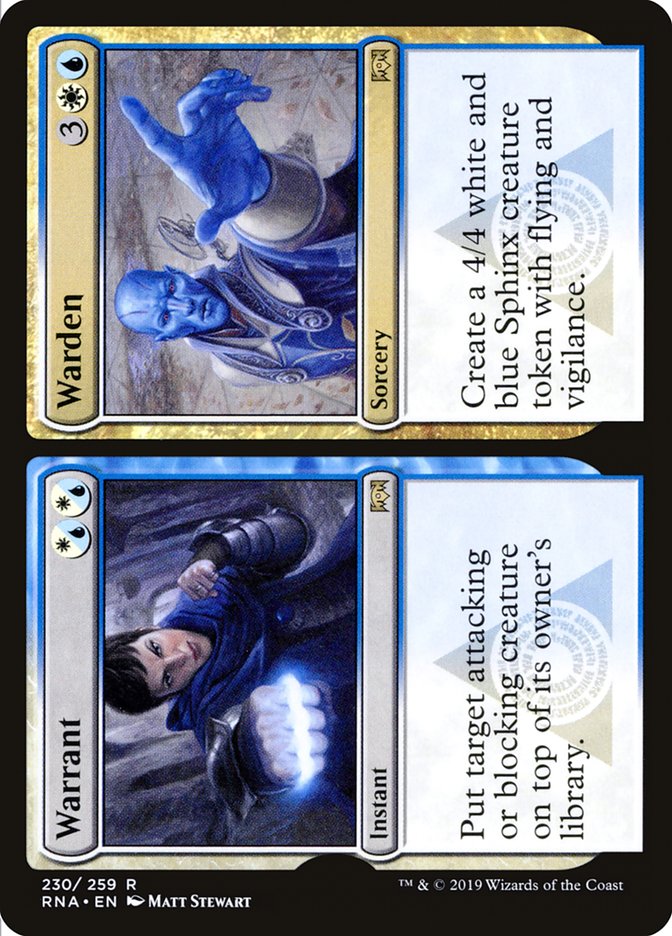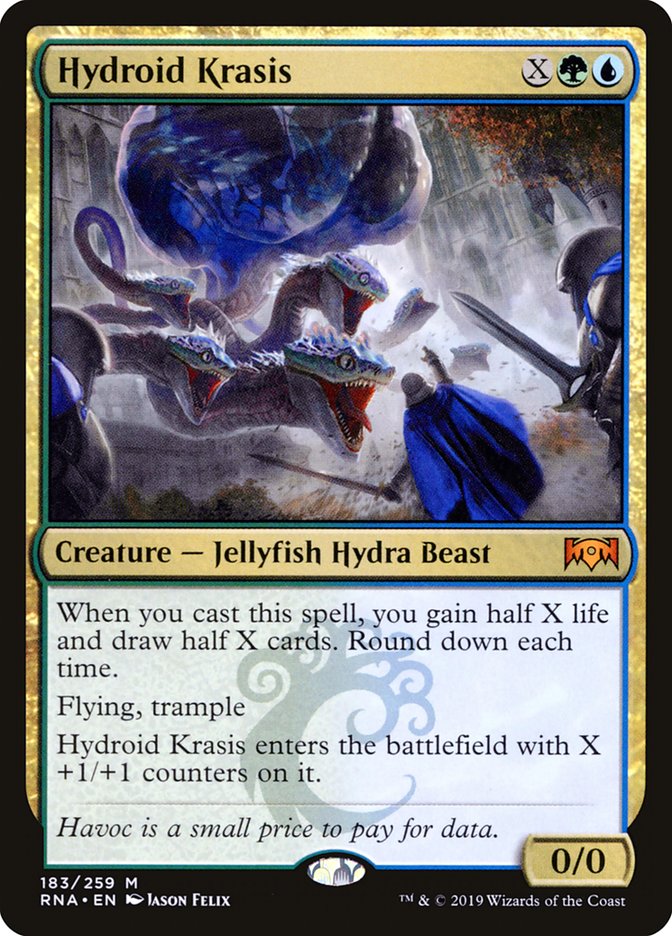What does it mean when we say something in Magic is broken?
The first era of broken cards came from a time where the designers of Magic
were finding their footing and didn’t quite understand the effect of
dramatically undercosting spells. These cards simply did so more for so
much less mana than everything else at the time. The Power Nine became
iconic for the kind of hyper-efficiency that could only exist while a game
developer was still wrapping their head around their own creation:

The next era of broken Magic cards came during the Urza’s Saga
block. These cards lacked the raw efficiency of the Power Nine. Instead,
they fundamentally altered the way you would play a game of Magic. The game
stopped being about gathering resources and managing threats and just
became about finding the best way to do the most broken thing. Often this
broken thing involved manipulating the number of cards and mana you had
access to in dramatic fashion. Some of these spells offered refunds in mana
upon their resolution, essentially rendering them “free”:

The third heyday of broken cards was Mirrodin block. Again, unfair
resource manipulation and free cards were the order of the day:

In recent times, it feels like broken has become another synonym for “good”
or “above rate”. Look at post-Mirrodin block bannings.

There’s an argument to be made that none of these cards are broken in the
traditional sense. The closest contenders are Felidar Guardian and
Aetherworks Marvel, but these cards could be moved to other contexts and be
completely acceptable. They both existed alongside problematic dance
partners in Saheeli Rai and the Eldrazi. The other recently banned cards
are powerful options that, while clearly unhealthy for gameplay and better
than comparable options, still were interested in doing the type of actions
that occur in a typical game of Magic-gathering resources, attacking, etc.
Problematic? Unhealthy? Banworthy? Sure.
But broken? I’d say no.
The fact that the lexicon has evolved to describe cards like Rouge Refiner
as broken leaves me at a bit of a loss when talking about the star of
today’s deck:
Because Wildness Reclamation is Urza’s Saga style broken. Patrick
Chapin hammered home the point yesterday, and I’m not surprised he picked
up on this one. After all, he was one of the people maximizing the broken
cards in Urza’s block back in the day.
As was the key in Urza Block, the format should begin with figuring out the
best way to maximize a card which is free to cast and has the potential to
grant you access to resources on an unbelievable scale. How about a deck
that can combo off and take all the turns as early as Turn 4 while gaining
a substantial amount of life along the way?
Oh, you also get a three-mana mass removal spell.
Creatures (1)
Lands (27)
Spells (32)

The things this deck can do are just jaw-dropping. Here, our opponent had a
nice little aggressive Golgari start. We managed to stay alive only with
the help of a couple of Revitalize.
Here’s how we started our Turn 6.

Here’s how it ended.

Guess we didn’t need that sweeper.
Let’s do the card by card breakdown thing:
The Manabase
To consent to playing the game a turn behind by virtue of your fourteen
tapped lands, you have to generate some serious synergies elsewhere. Our
Gates will do exactly that, but don’t sleep on the incidental lifegain from
Plaza of Harmony. Arch of Orazca is a key inclusion for working the last
few non-Nexus cards out of your deck and maximizing the multiple untap
steps that Wilderness Reclamation will grant us. I think a third Gruul
Guildgate is a reasonable inclusion, possibly over the fourth Breeding
Pool.
3 Wilderness Reclamation
While Wilderness Reclamation may be the most broken card in our deck, the
first copy is so powerful that even though copies stack, the second one is
often redundant. Wilderness Reclamation unlocks every other card in your
deck. It allows you to spend your main phase aggressively searching for
your payoff cards, and your end step (or your opponents end step) casting
them. It allows you to cast Nexus of Fate with only four lands on the
battlefield. It grants multiple Arch of Orazca activations. All your Turn 4
and 5 wins are built on Wilderness Reclamation.
4 Nexus of Fate and 3 Emergency Powers
Our payoff cards, our entire gameplan is based on getting to the point
where we can cast these cards multiple times. Emergency Powers is easily
the most controversial inclusion in this deck, as I’ve heard people suggest
that blue card draw such as Search for Azcanta and Chemister’s Insight is
just better. Emergency Powers does a far better job of letting you “go for
it” in risky spots. I’ve won plenty of games off just seven lands and a
main phased Emergency Powers that put a Wilderness Reclamation onto the
battlefield. People see reshuffling your graveyard in a deck that’s trying
to reduce to just Nexus of Fates as problematic, but with the addition of
Guild Summit, a large percentage of your deck become cantrips as the game
goes on. If you’ve set up Wilderness Reclamation and a Guild Summit, you’re
not worried about shuffling Revitalizes, Growth Spirals, and Circuitous
Routes back into your deck.
Using Emergency Powers also gets you access to additional copies of your
win conditions, which allows you to spend them aggressively in the early
game and still find an attacker when you have amassed an arbitrary number
of turns. First drafts of Nexus of Fate decks that I crafted deserved
criticism for including Emergency Powers over the blue card drawing spells.
This version properly utilizes the flashy Timetwister analog.
It’s interesting that both of our payoff cards are callbacks to the Power
Nine. Magic designers love creating new versions of these effects because
they inspire excitement in players. The main way they safely reprint these
spells is by increasing mana costs and imposing timing restrictions.

Nexus of Fate and Emergency Powers, when played in conjunction with
Wilderness Reclamation, essentially ignore these safety valves. You can
cast Emergency Powers on your opponent’s end step and get the first shot at
a new seven-card hand, even if you’ve used your mana proactively during
your main phase. To say nothing of the fact that Nexus of Fate actually
returns itself to your deck (
I’ve certainly said my piece on this in the past
). The core mana engine of this deck is broken, and it uses that brokenness
to gain access to other overpowered effects. This is the reason that
playing this deck can occasionally feel like playing Vintage.
4 Guild Summit
The true reason for committing to the Gate manabase, Guild Summit is the
best draw engine a deck like this can hope for. Sometimes it’s just your
tap out draw spell, sometimes you will leave mana open to look for specific
answers, but most importantly, it turns a bunch of your lands and your
Circuitous Routes into cantrips. This is critical as you reach the
lategame, and every single additional card can mean the difference between
life and death. With Wilderness Reclamation, you can chain multiple Guild
Summits across multiple turns and still get your end step Nexus of Fates
off. Congratulations, you’ve probably won the game or passed the turn back
having swept your opponent and plus 21 life. GG.
4 Revitalize, 2 Gates Ablaze
Here’s our interaction. We’re just need to hold on a few extra turns in the
face of aggression. Revitalize does that and gets us to our payoffs faster.
Gates Ablaze is an incredible sweeper where you’re willing to put in the
effort, and every drop of mana efficiency this deck can offer us is
critical. You’ll be thankful your sweeper costs three instead of five when
you also want to cast a Nexus of Fate on the same turn.
4 Gift of Paradise, 4 Growth Spiral, 3 Circuitous Route
Our end game obviously requires significant mana investment. These cards
synergize beautifully with the other aspects of our deck and do so much
more than just ramp us. Gift of Paradise functions as additional life total
insurance while making our Plaza of Harmony a five-color land. Growth
Spiral crucially cantrips on its own, digging to Nexus of Fate and
Emergency Powers, and Circuitous Route transforms into a draw two with a
Guild Summit on the battlefield while it powers up each future copy of
Guild Summit. It also works potentially dead draws out of our deck as we
seek to chain Nexus of Fate turns.
1 Warrant // Warden, 1 Hydroid Krasis
Our win conditions. One selling point of this deck is that it closes the
game very quickly after it has garnered control. You make a flyer, queue up
a bunch of extra turns, and attack for lethal. None of this Teferi tucking
nonsense here. Because we have access to Emergency Powers, you can safely
expose your threats to removal. Even if your Hydroid Krasis faces a
Vraska’s Contempt or Conclave Tribunal, you’ll still be able to use Warden
to make 4/4 flyers and close out the game. I like how small this package
is, and the fact that our kill conditions effectively contribute to our
A-plan of surviving to take all the turns is a huge boon. Without access to
fogs, Teferi is just too fragile in all non-end game situations. I don’t
want to pay five mana to draw a single card. Our deck aims bigger than
that, and Teferi is playing small ball.
Despite occasional “mathy” turns where you must figure out exactly how much
damage your opponent can potentially do if you pass back to them, this deck
is fairly simple to play. Stay alive. Accelerate your mana. Draw cards.
Cast big spells. In that order. If you achieve these things, you will win
the game.
A very important note. Because a card is the most broken card does not in
and of itself make it the best possible card to be playing. This deck, and
indeed the vast majority of strategies which will attempt to exploit
Wilderness Reclamation to its fullest, will be hyper linear (though I think
Wilderness Reclamation is good enough to be a value inclusion and not the
focal point of several other decks). Linear strategies will be vulnerable
to Negate, Disdainful Stroke, timely enchantment removal, Unmoored Ego, and
a host of other answers. As deckbuilders, we will have to find ways to
maximize Wilderness Reclamation decks that are forced to operate in their
fail state. Unchecked versions comboing on Turn 4 are well and good, but
these decks will have to present reasonable plans after being targeted.
As of now, I’ve been playing this deck only on Arena in best-of-ones. This
is basically easy mode for a deck like this, and if someone is going to
find success at SCG Indianapolis this weekend, they will need a sideboard
that is ready to adapt in games 2 and 3. Here’s my current first draft of a
sideboard. If I were playing SCG Indianapolis as opposed to commentating on
it, all my efforts would be focused on refining this sideboard.

I want a proactive plan for sideboard games when I expect opponents to
overload on Negate and Duress, and Gatebreaker Ram backed up by Gates
Ablaze can offer exactly that. A misers Settle the Wreckage is a little
extra insurance against decks trying to get by solely on aggression and an
out to the problematic Tajic, Legion’s Edge. Unmoored Ego is our trump
against opposing Nexus of Fate decks or any other combo-based weirdness.
Finally, Knight of Autumn is versatile enough to get us points in a host of
sideboard matchups. It’s not the best tool for any one job, but in Week 1
it will be important to stay flexible.
It could be that the deck wants to lean even harder on the aggressive Gate
theme and pack some copies of Gate Colossus. The card strikes me as
underpowered though, and that’s coming from someone who’s happily sleeving
up Guild Summit. Other options include Mass Manipulation, Angel of Grace,
Lyra Dawnbringer, Carnage Tyrant, Expansion, Banefire, Cleansing Nova,
additional copies of Hydroid Krasis, Dawn of Hope, and Teferi.
A benefit of your deck construction is that it’s basically a big mana deck
with plenty of card draw and only seven dead cards if your combo kill is
invalidated. This gives you a lot of flexibility when it comes to potential
transformational sideboard plans. If you can identify a curveball that
squeezes your opponent in just the right fashion, you can iron out a lot of
the linearity inherent in a strategy like Nexus of Gates. When you find the
secret sauce, come find me at SCG Indianapolis.
Actually, nevermind. I’m sure I’ll be able to find you, doing your Top 8
profile before the elimination rounds.


